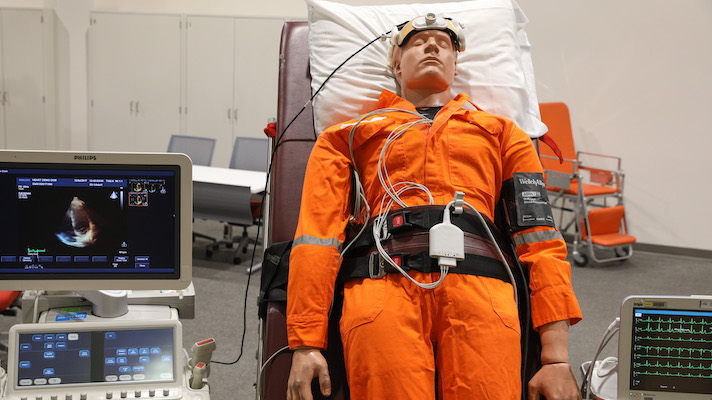
Loren Elliott/Getty Images
Scientists and innovators are no stranger to technology failures — often in the pursuit of bettering systems or advancing science. However, a mission to Mars, where the stakes are high and distance from Earth is extreme, is not the right place for experimenting with health tech, according to speakers at the Space Health Innovation Conference in San Francisco on Saturday.
“You are never going to send a green system you’ve never tested in space to Mars as its first flight,” Julie Robinson, chief scientist at the International Space Station (ISS) division for NASA's human exploration and operations, told MobiHealthNews.
A training ground out of this world
While a journey to Mars poses a unique set of challenges, including distance and flight duration, there are ways for scientists to vet technologies before they the mission. Take the ISS, which has become a testing ground for these new systems.
“One of the great things we can do on the space station is to test new technologies — kind of kick the tires, be sure it is working the way we want and be sure it is going to meet our needs when we go to Mars,” Robinson said. “The thing we can’t do on the way to Mars is you can’t send a replacement unit like we can on ISS. So, what we want to do is develop all the different systems we think we will use on a Mars system, test them on ISS for three years at least to be sure we understand how they work, [we] know how to fix them, we know they are reliable.”
Every time a new system needs to be changed or iterated it needs to be fully tested.
“We have a lot of systems that we’re still working on for the next generation,” she said. “So that is going to be a big driver of NASA’s use of the space station and its really why we need some extended access to low [Earth] orbit. In fact, we’ll probably need access to low [Earth] orbit for the long duration because every time we tweak a system or if we discover that, say, our life support has a problem, then we need to get another three years of run time on it before we are ready to go to Mars.”
New tools for a new planet
The crew traveling to Mars will require a different set of technologies and supplies than other crews in the past. While the ISS may be an opportune spot to test drive new space health technologies, past crews have had luxuries that the Mars crews won’t be able to access, including the ability for resupply, real-time communications and a quick return home, if needed.
“ISS is about 250 miles [from Earth]. we’re talking about going a thousand times further away to go to the moon and mars is a thousand times farther away than that,” Dr. Benjamin Easter, deputy element scientist of exploration medical capabilities at the NASA Human Research Program, said during the conference. “We have to increase the robustness of our capabilities, we plan very carefully to scope that medical system for going to Mars. No real-time communications, up to a 24-minute, one-way communication delay, we don’t have any ability to go back to it because of the orbital mechanics.”
So, in addition to figuring out how to test the technologies, ground teams are tasked with figuring out the right technologies to equip the crew with.
“There is no space cloud sitting there with all the data that mankind has,” Robinson said. “If you think about it, today you go to Google and you type something in and try to get a little information. So we have to build our space craft system today with information built in. You have to also build it with tools that can be used to find the right information. That is where AI can be useful, but you have to really think about how you solve problems.”
Testing smarter
NASA isn’t the only agency working on testing new tech for space travel. The Translational Research Institute for Space Health (TRISH), a consortium which includes the Baylor College of Medicine, California Institute of Technology and Massachusetts Institute of Technology, is focused on brining cutting-edge tech to space health. Kristin Fabre, the senior innovation scientist at the organization, said it is important to know what innovations to test, and how to do so properly.
“I think when it comes to novel types of technologies or interesting types of technologies or modifications that we are using for space exploration, the benefit of TRISH is we have access to analogs, so we can say what exactly is the type of questions we want to ask with these technologies,” Fabre said.
When it comes to figuring out how to test the technologies or what is needed in space, real life experience continues to be key, she continued.
“Talking to crew that have flown in space or NASA or our space health network, we can really try to understand what those gaps and challenges are,” she said. “So, if we are testing these technologies in the analog, we have the right test in place so that they will successfully be translated to adoption and implementation.”

















